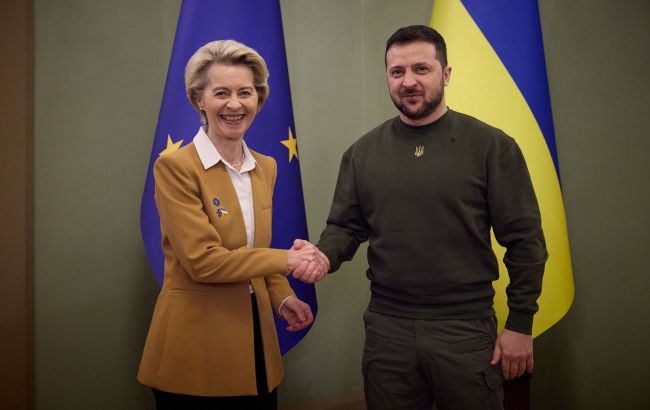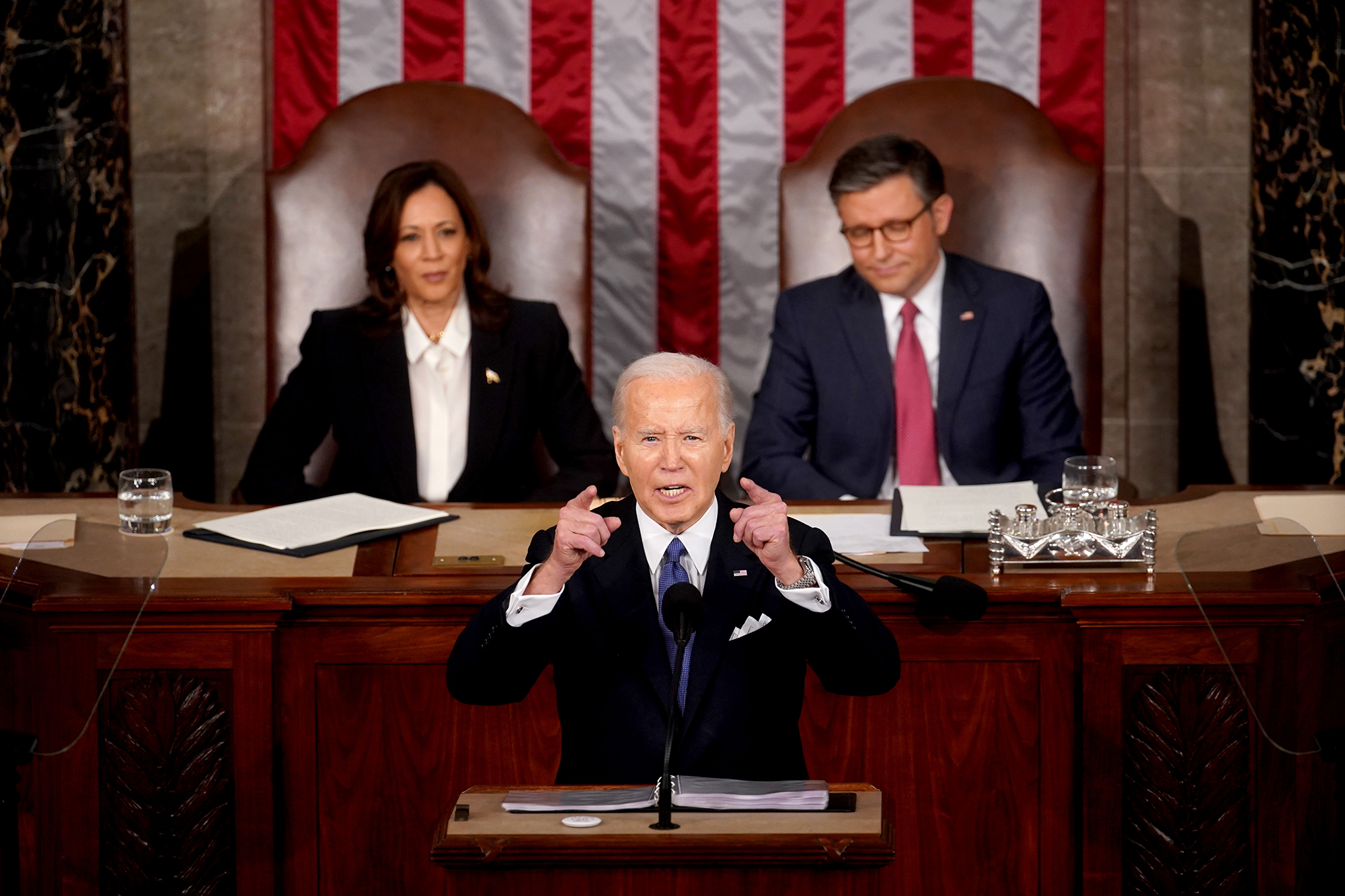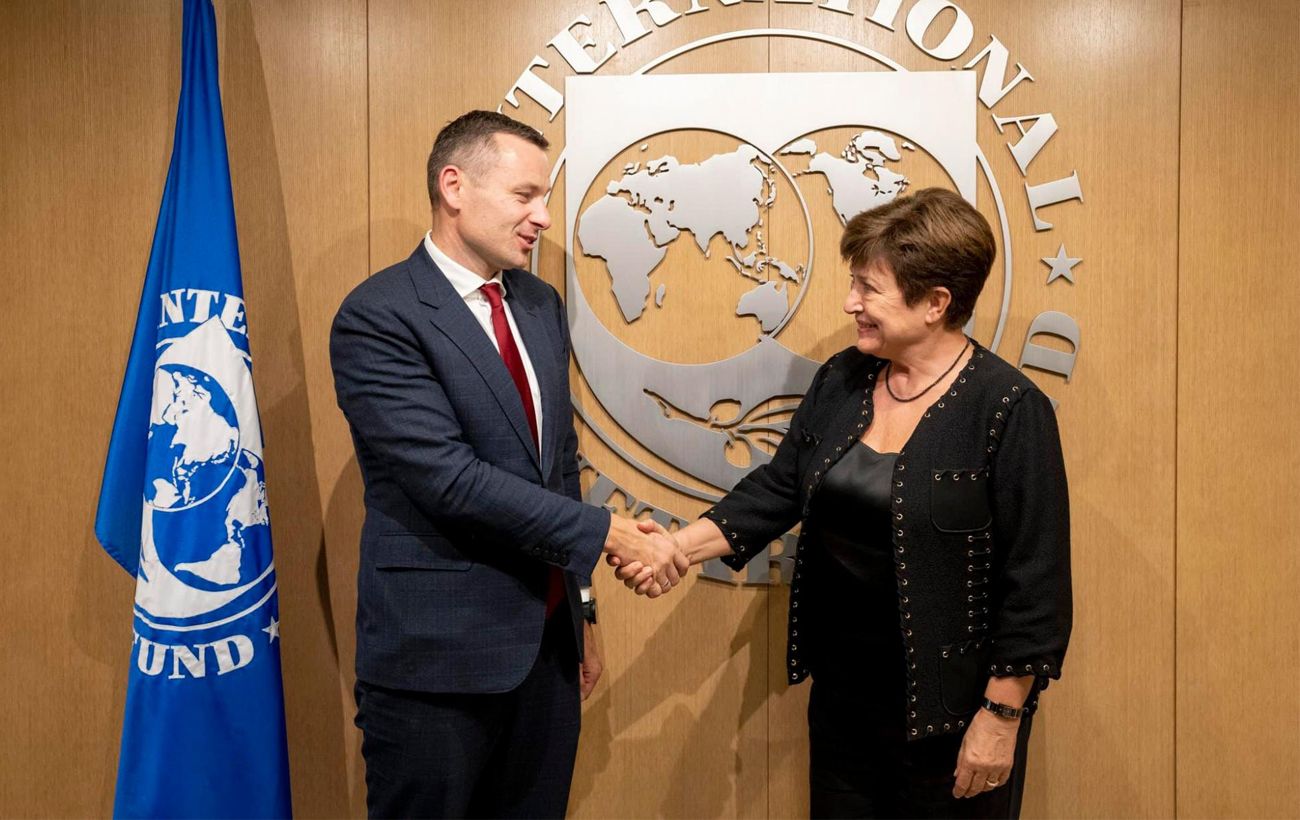Can Ukraine make it without US-EU aid? Budget sufficiency and alternatives assesed
 President of Ukraine Volodymyr Zelenskyy and President of the European Commission Ursula von der Leyen (Getty Images)
President of Ukraine Volodymyr Zelenskyy and President of the European Commission Ursula von der Leyen (Getty Images)
Ukraine has begun receiving substantial external financing for the first time this year. In March, tranches from the IMF, EU, and Canada totaling around $7 billion have been received. How long these funds will last and what to expect if the USA does not unlock funding in the near future is discussed in detail in an RBC-Ukraine article below.
Sources used in the preparation of the material: official documents and announcements from the IMF, data from the Ministry of Finance of Ukraine, comments from experts and members of parliament, and information from RBC-Ukraine's sources.
Content:
The situation with financing the state budget, which was extremely tense at the beginning of the year due to the lack of external assistance, somewhat improved by the end of March. Ukraine received about $900 million from the IMF's latest tranche, and $1.2 billion was transferred from Japan, Norway, and Spain. Canada provided a $1.5 billion credit. The largest tranche came from the EU - €4.5 billion under the Ukraine Facility (UF) program.
This is the EU's first tranche of transitional financing. The second, amounting to €1.5 billion, is expected in April. Effectively, €4.5 billion is the monthly support amounting to €1.5 billion for the first quarter. It was impossible to transfer the money in January-March because work on the reform plan (Ukraine plan) under the UF program was ongoing. Therefore, the first part for the first quarter was transferred immediately after the Ukrainian side provided the European Commission with the final draft document.
First Deputy Minister of Economy Oleksii Sobolev told RBC-Ukraine that this draft is final and is unlikely to be significantly revised in the European Commission, and at most, the Ukraine Plan will be approved within a month.
After this, another tranche of around €2 billion is expected. All funds will go to the budget of Ukraine. In total, the EU is expected to provide €16 billion in 2024 - tranches are planned to be allocated quarterly depending on the implementation of the Ukraine Plan.
RBC-Ukraine has written about how funding will depend on the implementation of reform indicators. The IMF memorandum places a separate emphasis on reforms. "Lack of progress in reforms exacerbates the financing deficit, reduces future inflows of external financing, and may lead to donor fatigue," the document says.
How long the money will last
Even at this rate of financing, there is still a shortfall of funds for the budget. The necessary monthly external inflows of $3.5 billion are currently covered only by two-thirds.
The shortage of funds is compensated by domestic borrowing. The Ministry of Finance holds auctions almost weekly to place government bonds. Over 100 billion hryvnias have been raised since the beginning of the year.
The situation with financing the state budget will remain uncertain until it becomes clearer when the USA will start allocating funds. It is expected that a decision will be made in April.

US President Joe Biden (photo: Getty Images)
If hopes are realized, the issue of financing until the end of the current year could be considered resolved, according to the head of the Financial Committee of the Verkhovna Rada, Danylo Hetmantsev. If not, then there will only be enough money for a few months.
"If the issue with the USA is not resolved in April, then there will be enough money until the end of summer. Although there are different potential scenarios," he said in a comment to RBC-Ukraine. He did not specify what these scenarios might be. The government is working with Ukraine's political partners to find additional funds for the budget.
However, experts assess the prospect more pessimistically. "So far, we are covering the needs of January-April, and that is if Japan allocates some funds and the EU in April transfers the second tranche of transitional financing of €1.5 billion. Considering that significant revenues from increased taxes for banks and dividends from state-owned companies are currently going to the budget, for the first 4-5 months (until June - ed.), we are more or less provided for. But we need a minimum of $3 billion in international financing per month, and we haven't reached that level this year yet," said Oleksandr Parashchii, head of the analytical department of ICU Concorde Capital, to RBC-Ukraine.
A similar forecast is shared by the head of the macroeconomic research department at ICU, Vitalii Vavryshchuk. In his opinion, taking into account significant deferred expenditures, involuntarily postponed in January-February, the March assistance is unlikely to be enough for more than two months.
"But the main thing is that immediate receipt of financial assistance from the USA has ceased to be a critical issue regarding budget financing," he said in a comment to RBC-Ukraine.
Should tax increases be expected
The lack or delay of external and/or internal financing may lead to a larger deficit, according to the latest version of the IMF memorandum. The document says that the EU program for Ukraine in the amount of €50 billion is a significant positive event, but uncertainty remains regarding the timing of approval by the US Congress of budget support. Deficit or prolonged delay in donor financing may require the authorities to take immediate countermeasures.
The total amount of budget support from the USA is expected to be almost half of that from the EU - about $8 billion, but it is precisely this support, provided rhythmicallY, that determines the possibility of budget expenditure execution. If this funding is not forthcoming, Ukraine will have to:
a) seek alternative sources, which is quite difficult to do in such volumes;
b) cut expenses, which is also not easy, given that the budget was already formed with maximum cost-saving measures;
c) increase the tax burden.
But most likely, a combination of these measures will be necessary. The IMF memorandum also mentions the possibility of increasing financial pressure and reducing expenses in the event of a shortage of external financing.

Ukraine's Finance Minister Serhii Marchenko and IMF chief Kristalina Georgieva (photo: Facebook Serhii Marchenko)
Deputy Director of the National Institute for Strategic Studies Yaroslav Zhalilo believes that the government is unlikely to cut social programs.
"The government may try to find some secondary items, such as science, culture. But this is such a tiny resource that the negative political effect will be much greater than the positive fiscal effect," he noted in a comment to RBC-Ukraine.
Zhalilo suggested that the government is more likely to propose increasing the tax level. He mentioned that there is already an initiative to raise excise taxes on gasoline and alcohol. "This is proposed to align excises with European standards. In the current situation, this is very relevant," he said.
Additionally, Zhalilo believes that some macroeconomic instruments could be used. First of all, exchange rates. "If the hryvnia is somewhat, let's say, devalued, it will allow for increased revenues in terms of VAT, excises, which are collected in euros," the expert noted.
Furthermore, he believes that the National Bank of Ukraine may be allowed to buy government bonds. "The IMF considers this extremely undesirable, but does not categorically prohibit it. It's bad, but theoretically, this option cannot be ruled out," Zhalilo said.
Plan B details
So far, the IMF memorandum does not outline actions in case of a reduction in receipts from partners – the hope of receiving money from the USA still remains. However, sources familiar with the negotiation process with the IMF said that specific steps, if the situation develops negatively, will be determined during the next program review in May.
"Specific steps will be provided after the next review," said the interlocutor. In fact, this will be the concretization of Plan B, which has been discussed since the end of last year.
A reduction or absence of necessary external financing is a risk to the positive scenario, which anticipates the end of active hostilities by the end of 2024. If the situation develops negatively, where active warfare continues until the end of 2025, the economic situation will significantly deteriorate.
In such a case, Ukraine will need significantly more funds. Instead of $121.8 billion for the period 2023-2027, nearly $19 billion more will be needed – $140.6 billion, according to calculations by the fund. Then it will be necessary to substantially revise both the IMF program and all agreements with international partners, including the Ukraine Facility with the European Union.

